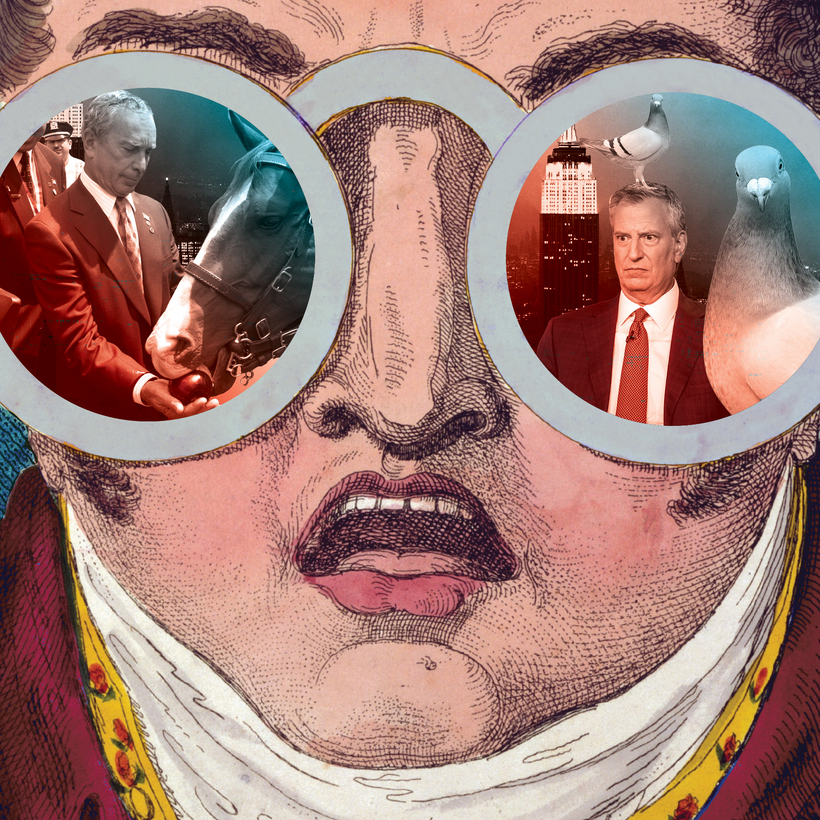Is that whoosh of dollars cascading out of the A.T.M. the sound of redemption? Could be.
Michael Bloomberg seems to be making amends for his pharaonic $900 million failed presidential bid. (In the end, he earned 59 delegates and spent about $15 million for each.) He has pledged $100 million to Biden’s Florida campaign—and helped pay the court fines of released convicts effectively disenfranchised by a Trump-leaning appeals court in the state. The judges ruled that even though they served their debt to society, former felons have to pay court fees and fines before they can vote: a pink-flamingo poll tax.
Bloomberg still owes us. When he announced he would run, he promised to keep most of his 2,400-strong campaign staff paid and working for whoever became the Democratic nominee until the November election; after he dropped out, he churlishly changed his mind. So now he’s giving a 100 million here, a few million there.
He can do more. He can join forces with Bill de Blasio and lead the effort to re-invigorate New York’s ravaged neighborhoods and businesses.
Bill de Blasio and Mike Bloomberg are totally unalike but have things in common besides stints in City Hall: in 2020, they were quickly and humiliatingly crushed in the Democratic primaries. They both badly need a face-saving new first paragraph on their Wikipedia pages. And they both are in a position to do something major to restore New York City—as long as they do it together.
New York City doesn’t have enough money; Bloomberg has so much of it.
Bloomberg no longer has any official standing with borough presidents, the city council, unions, police, advocacy groups, or school principals. De Blasio may not have their respect, to put it mildly, but until November 2021 he does guide the city’s budget—and favor bank.
Think about it: if Bloomberg put a fraction of his $55 billion fortune toward kick-starting a public/private, W.P.A.-style City Recovery Corps, de Blasio could probably make it happen.
Under this plan, the city could recruit anyone from 18 to 30 who doesn’t have a job (including furloughed city workers) or is taking a college gap year, pay them $20.00 an hour, and deploy the corps, Teach for America–style, to help out in schools, homeless shelters, soup kitchens, health services, testing centers, and retirement homes. They can fill potholes, pick up trash, keep the parks tended and clean, plant flowers. Rich kids might be emboldened (or shamed) into doing it for free.
New York City doesn’t have enough money; Bloomberg has so much of it.
Trump, even though he now has the coronavirus, is not bailing out New York City. Cuomo can’t. Thanks to the pandemic and the loss of billions in tax revenue, de Blasio this week furloughed another 9,000 city employees. Volunteers can’t make up the difference. The city has about 2,500 AmeriCorps workers (they are paid a stipend) spread across the five boroughs, and their dedication is proof of concept. De Blasio opened up public schools—why can’t he deploy Recovery Corps recruits to help overburdened teachers test students and monitor social distancing at recess?
The city and its finances are a shell-shocked post-coronavirus mess, nobody has a workable solution, and de Blasio seems to have punted on what is so needed right now: strong leadership. But there are signs of resilience everywhere. In some parts of the city where streets are littered with strewn garbage and broken bottles (thanks to cuts in trash collecting), neighborhood volunteers are joining together in cleanup patrols—old people, young moms of all kinds.
What if people were paid to do the same in every neighborhood?
It won’t fix the overall crisis, but it might keep New York functioning for a while and bring some relief to overwhelmed city employees, not to mention inspire others to pitch in. It would give the unemployed an income and honorable work. It could restore confidence to middle-class New Yorkers poised to flee to the suburbs for good, and it might attract the support—political and financial—of nonprofits, philanthropists, corporations, and, especially, real-estate giants, who have every incentive to keep people in their apartments and offices.
It takes money. It also takes nerve and political clout, and most of all it takes a desperate situation—and New York, according to some experts, is far more imperiled now than during the 1975 fiscal crisis, which impelled the financier Felix Rohatyn and the developer Richard Ravitch to step up and craft a plan to save the city. They were hailed as heroes.
You know who almost never gets mentioned? Then mayor Abe Beame.
Ahem, Bill de Blasio.
No matter how much some New Yorkers may loathe the current mayor (or his predecessor), the possible rehabilitation of their reputations is a small price to pay for trying to save New York City and making it ready for the 21st century.
That A.T.M. has plenty of cash left. Let Bloomberg and de Blasio use some of it to help New York—and themselves.


